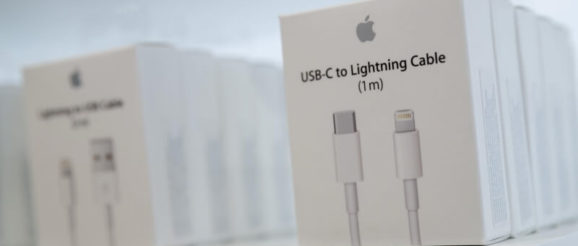Apple argues against EU calls for universal mobile charger, says it would stifle innovation – TechSpot

A hot potato: Apple has spoken out against the European Parliament’s plans to force tech companies to adopt a universal charger for smartphones and other electronic devices. Not surprisingly, the iPhone maker isn’t happy about the idea, claiming it “stifles innovation” and would inconvenience millions of people.
Earlier this month, it was reported that the EU was considering legislation that would require all mobile devices to support a single charging standard, thereby making consumers’ lives less complicated while reducing the 51,000 tons of electronic waste generated every year by old chargers.
While many Android phones now use USB-C, Apple still uses its Lightning connector for the company’s iPhones, though it has made the switch to USB-C in its latest iPad Pros.
Responding to the proposal, Apple said not only would ditching the Lightning connector inconvenience hundreds of millions of its customers, but also create an “unprecedented volume” of waste.
“We believe regulation that forces conformity across the type of connector built into all smartphones stifles innovation rather than encouraging it, and would harm consumers in Europe and the economy as a whole,” Apple said. “We hope the Commission will continue to seek a solution that does not restrict the industry’s ability to innovate and bring exciting new technology to customers.”
Last month, Apple commissioned a study by Copenhagen Economics that found 49 percent of households rely on multiple connector types, but only 0.4 percent of European consumers said they “regularly experience any significant issue” with charging their devices due to incompatible cabling.
The study also claims that moving to a common charger would cost €1.5 billion (about $1.7 billion), much more than the estimated €13 million ($14.4 million) in potential environmental benefits. It added that disrupting millions of people who use Lightning cables could create new environmental problems, and pointed out that the industry has already moved from “30 chargers to three, soon to be two.”
What’s interesting is that Apple is expected to drop the Lightning connector in future iPhones, possibly next year’s models. In time, they might even become completely port-free and rely on wireless charging.
Apple’s statement in full:
Apple stands for innovation and deeply cares about the customer experience. We believe regulation that forces conformity across the type of connector built into all smartphones stifles innovation rather than encouraging it, and would harm consumers in Europe and the economy as a whole.
More than 1 billion Apple devices have shipped using a Lightning connector in addition to an entire ecosystem of accessory and device manufacturers who use Lightning to serve our collective customers. Legislation would have a direct negative impact by disrupting the hundreds of millions of active devices and accessories used by our European customers and even more Apple customers worldwide, creating an unprecedented volume of electronic waste and greatly inconveniencing users.
We do not believe there is a case for regulation given the industry is already moving to the use of USB Type-C through a connector or cable assembly. This includes Apple’s USB-C power adapter which is compatible with all iPhone and iPad devices. This approach is more affordable and convenient for consumers, enables charging for a wide range of portable electronic products, encourages people to re-use their charger and allows for innovation.
Prior to 2009, the Commission considered mandating that all smartphones use only USB Micro-B connectors which would have restricted the advancement to Lightning and USB Type-C. Instead, the Commission established a voluntary, industry standards-based approach that saw the market shift from 30 chargers down to 3, soon to be two — Lightning and USB-C, showing this approach does work.
We hope the Commission will continue to seek a solution that does not restrict the industry’s ability to innovate and bring exciting new technology to customers.
